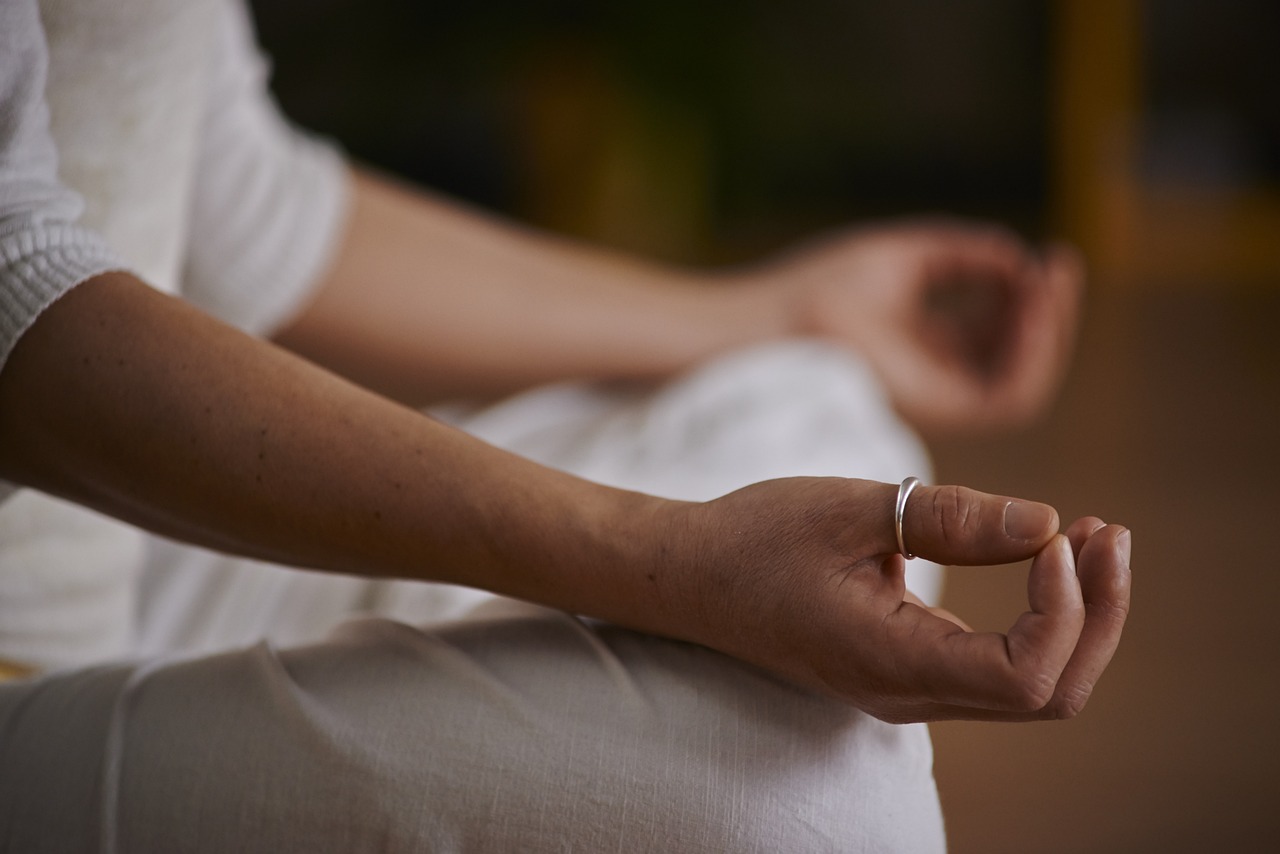The Vital Importance of Balance Exercises for Seniors
Maintaining good balance is a cornerstone of healthy aging, particularly for seniors. As we grow older, our balance can naturally decline, putting us at greater risk of falls and limiting our ability to perform daily activities independently. Incorporating balance exercises into a regular fitness routine is essential for seniors to enhance stability, prevent falls, and maintain overall well-being.
Understanding the Significance of Balance for Seniors
Why is balance so crucial for older adults? Let's delve into the key reasons:
1. Fall Prevention: Seniors are more susceptible to falls due to factors like reduced muscle strength and changes in gait and balance control. Falls can result in serious injuries such as fractures, head trauma, or loss of confidence. Improving balance through exercises helps reduce the risk of falls and minimizes the impact of any potential accidents.
2. Preservation of Independence: Good balance is fundamental for performing everyday tasks like walking, standing up from a chair, or reaching for items on a shelf. By strengthening balance skills, seniors can maintain their independence and continue to engage in activities they enjoy.
3. Enhanced Coordination: Balance exercises not only improve balance but also enhance coordination and body awareness. This can translate into smoother movements and a reduced risk of accidental injuries during daily activities.

Key Benefits of Incorporating Balance Exercises
The advantages of incorporating balance exercises into a senior's fitness regimen are manifold:
Strengthens Muscles: Many balance exercises engage core muscles, legs, and stabilizer muscles, which can help strengthen these areas and improve overall stability.
Improves Posture: Good balance often goes hand-in-hand with good posture. By practicing balance exercises, seniors can develop better posture, reducing strain on the spine and joints.
Boosts Confidence: As seniors become more adept at balancing, they gain confidence in their physical abilities and feel more secure navigating their environment.
The Essential Benefits of Balance Training
Balance training is a crucial aspect of physical fitness, offering a range of important benefits for individuals of all ages. Here are five key advantages of improving and maintaining balance through targeted exercises:
1. Fall Prevention and Safety
One of the primary benefits of balance training is its role in preventing falls, particularly among older adults. By enhancing balance, individuals can better maintain stability and recover from sudden shifts in body position, reducing the risk of accidents and injuries caused by trips or falls.
2. Enhanced Coordination and Control
Balance exercises require the coordination of various muscle groups and sensory systems. Regular practice improves proprioception—the body's awareness of its position in space—and overall coordination. This leads to smoother, more controlled movements during daily activities.
3. Strengthened Muscles and Stability
Many balance exercises engage core muscles, legs, and stabilizer muscles throughout the body. By strengthening these muscles, balance training not only improves stability but also enhances overall strength. This contributes to better posture and reduces the risk of musculoskeletal injuries.
4. Improved Posture and Alignment
Good balance is closely associated with good posture. As individuals improve their balance, they become better at maintaining proper alignment of the spine and joints while standing, walking, or performing other activities. This can alleviate strain on muscles and ligaments, reducing discomfort and promoting long-term musculoskeletal health.
5. Increased Confidence and Independence
As balance improves, individuals gain confidence in their ability to move safely and independently. This boost in self-assurance has a positive impact on overall quality of life, enabling individuals to participate more fully in daily tasks and recreational pursuits without fear of falling or injury.
Incorporating balance exercises into a regular fitness routine is beneficial for people of all ages. Whether you're looking to enhance stability, prevent falls, or simply improve overall physical coordination, balance training offers a pathway to better health and mobility. Start integrating these exercises into your daily regimen to experience the profound benefits of enhanced balance and stability.

Effective Balance Exercises for Seniors
Maintaining good balance is essential for seniors to prevent falls and maintain independence in daily activities. Here are some simple yet effective balance exercises that seniors can incorporate into their daily routine:
1. Standing on One Leg:
- Find a sturdy surface or hold onto a chair for support.
- Raise one leg off the ground and aim to maintain balance on the other leg.
- Hold the position for 10-15 seconds, then switch legs.
- Slowly extend the duration as you notice improvement in your balance.
Heel-to-Toe Walk:
The heel-to-toe walk is a beneficial balance exercise that challenges coordination and stability. Follow these steps to perform the exercise:
- Begin by standing with your feet together and arms relaxed at your sides.
- Step forward by placing the heel of your front foot directly in line with the toes of your back foot.
- Shift your weight onto the front foot as you bring the back foot forward to repeat the step.
- Continue walking in a straight line, ensuring that each step places the heel of the front foot touching the toes of the back foot.
- Keep your arms slightly extended to the sides for balance support.
- Focus on maintaining a steady pace and smooth movement throughout the exercise.
The heel-to-toe walk helps improve balance by challenging the body's ability to maintain a straight line of movement and coordinate foot placement with each step.
Tai Chi:
Tai Chi is a gentle martial art characterized by slow, flowing movements and controlled breathing. Here's why Tai Chi is beneficial for seniors:
Balance Improvement: Tai Chi emphasizes weight shifting and body alignment, which helps improve balance and stability.
Flexibility: The gentle, continuous movements of Tai Chi promote flexibility by stretching muscles and joints.
Relaxation: Tai Chi incorporates deep breathing techniques and mindful focus, promoting relaxation and stress reduction.
Senior-Friendly: Tai Chi can be adapted to accommodate different fitness levels and physical abilities, making it accessible and enjoyable for seniors.
Community Engagement: Seniors can benefit from joining Tai Chi classes specifically designed for their needs, providing social interaction and a supportive environment.
4. Leg Raises:
- Stand behind a sturdy chair or hold onto a countertop for support.
- Lift one leg straight back while keeping the knee straight.
- Maintain the position for a few seconds, then lower the lifted leg.
- Repeat with the other leg.
- This exercise strengthens the muscles in your legs and improves balance.
5. Yoga:
- Many yoga poses focus on balance and flexibility, making them ideal for seniors.
- Poses like Tree Pose (Vrikshasana), Warrior III (Virabhadrasana III), or Mountain Pose (Tadasana) can be adapted to suit varying levels of ability.
- Yoga also promotes relaxation and mental well-being.

Tips for Getting Started:
Safety First: Use a sturdy chair or countertop for support if needed, especially when trying new exercises.
Start Slowly: Begin with shorter durations and gradually increase the time and intensity of each exercise as your strength and balance improve.
Consistency is Key: Aim to perform these exercises regularly, ideally 2-3 times per week, to see improvements in balance and stability over time.
Listen to Your Body: Pay attention to your body, if you feel any pain or discomfort during an exercise, cease immediately and seek advice from a healthcare professional.
By incorporating these balance exercises into your routine, you can improve your stability, reduce the risk of falls, and maintain confidence in your ability to perform daily activities with ease. Always consult with your doctor before starting a new exercise program, especially if you have any health concerns or conditions.
Getting Started Safely
Before beginning any exercise program, seniors should consult with their healthcare provider, especially if they have pre-existing health conditions or concerns about their balance. Once cleared, it's essential to start slowly and gradually increase the intensity and duration of exercises over time.
In Conclusion
In conclusion, balance exercises play a pivotal role in promoting the health and well-being of seniors. By incorporating these exercises into a daily routine, older adults can strengthen their muscles, improve their coordination, and reduce the risk of falls. Remember, consistency is key—so start today and reap the benefits of enhanced balance and stability for years to come!

FAQs: The Importance of Balance Exercises for Seniors
1. Why should seniors do balance exercises?
Seniors should do balance exercises because they help improve stability and coordination, which can prevent falls and injuries. These exercises also strengthen muscles and make everyday movements easier.
2. How do balance exercises benefit overall health?
Balance exercises benefit seniors by improving muscle strength, posture, and mobility. They contribute to better physical function and can enhance quality of life.
3. Can balance exercises help prevent falls?
Yes, balance exercises are great for preventing falls because they improve muscle strength and coordination. Seniors who do these exercises regularly are better at staying steady and avoiding accidents.
4. What types of balance exercises are good for seniors?
Seniors can try various balance exercises like standing on one leg, walking heel-to-toe, Tai Chi, yoga, and specific strength exercises for the core and legs.
5. How often should seniors do balance exercises?
Seniors should aim to do balance exercises two to three times per week, along with other activities like walking or strength training.
6. Are balance exercises safe for seniors with health issues?
Balance exercises can be safe with modifications for seniors with health issues, but it's important to check with a doctor first.

7. How can seniors include balance exercises in daily life?
Seniors can practice balance exercises while doing daily tasks like cooking or watching TV. This makes it easier to stay active without needing extra time for exercise.
8. What are signs that a senior could benefit from balance exercises?
Seniors who feel unsteady on their feet or worry about falling can benefit from balance exercises. These exercises can boost confidence and reduce the risk of falls.
9. Can balance exercises help with memory and thinking?
Some balance exercises, like Tai Chi, may improve cognitive function by stimulating the brain and improving focus and coordination.
10. How can seniors start doing balance exercises?
Seniors can start with simple balance exercises and gradually add more challenging ones as they get stronger. It's a good idea to work with a fitness instructor or physical therapist to learn the right techniques and stay safe.
Balance exercises are important for seniors to stay steady, prevent falls, and feel more confident in daily life. By incorporating these exercises regularly and seeking guidance from healthcare professionals if needed, seniors can improve their overall well-being and independence.
Powered by Froala Editor





Leave a Reply